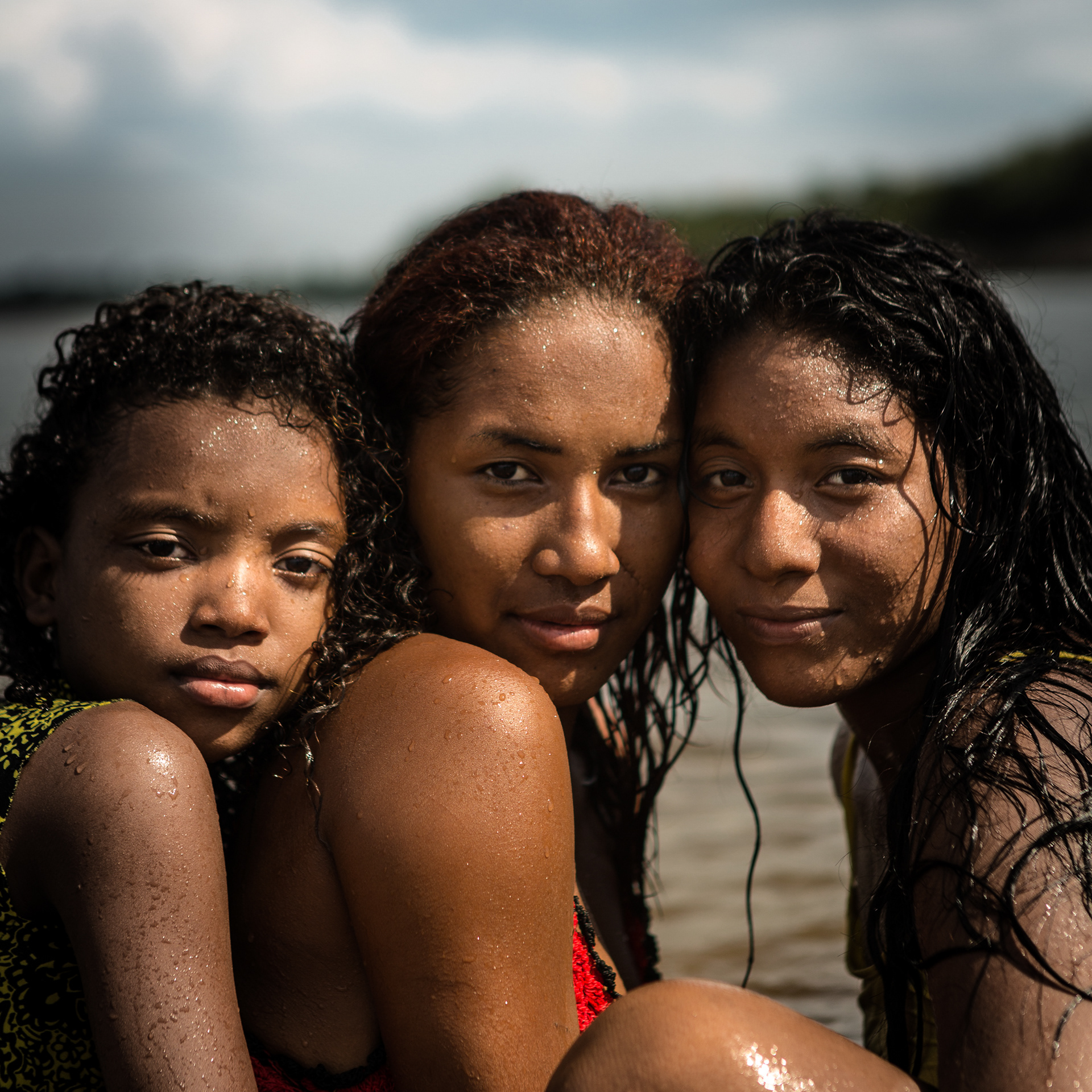
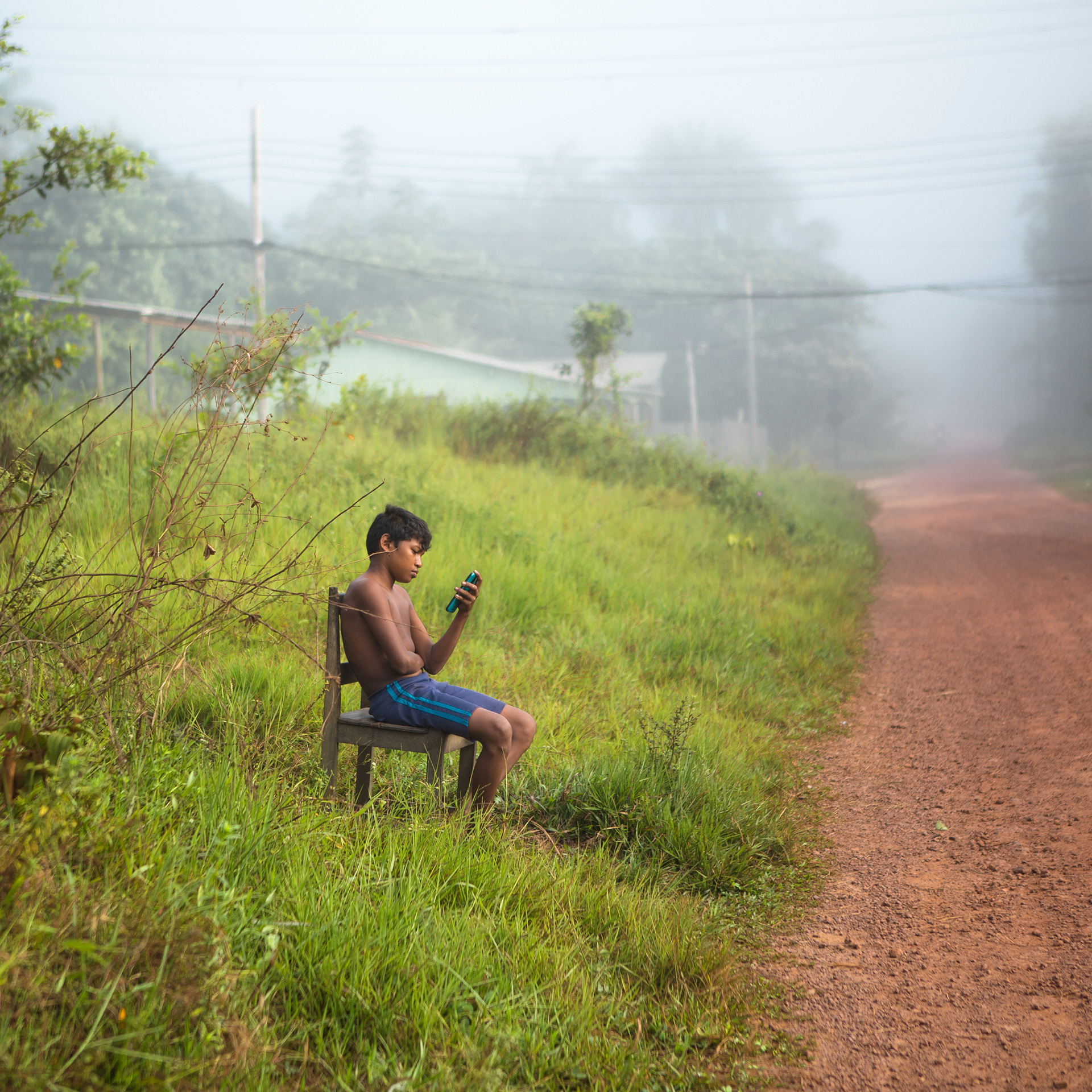
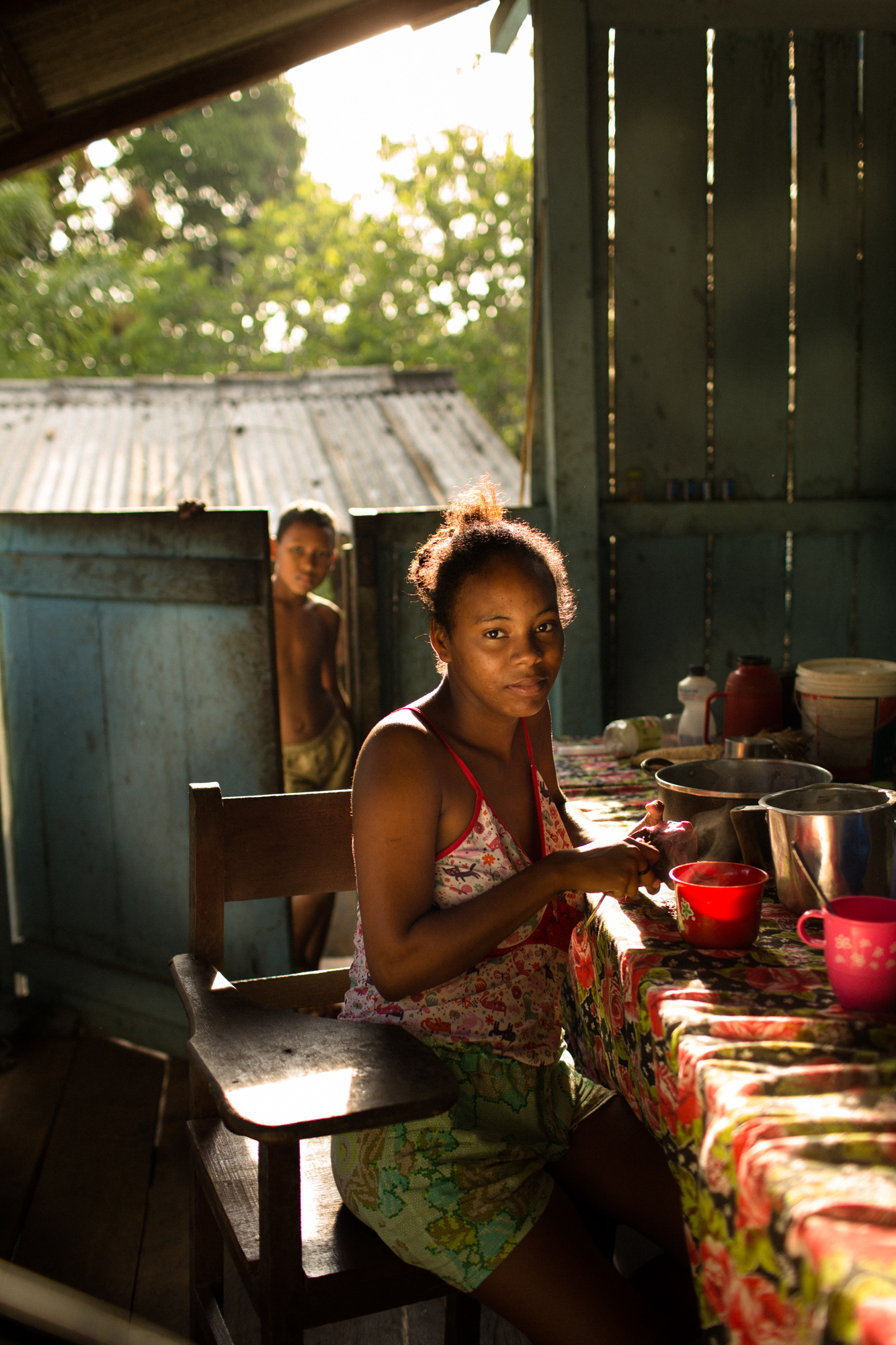
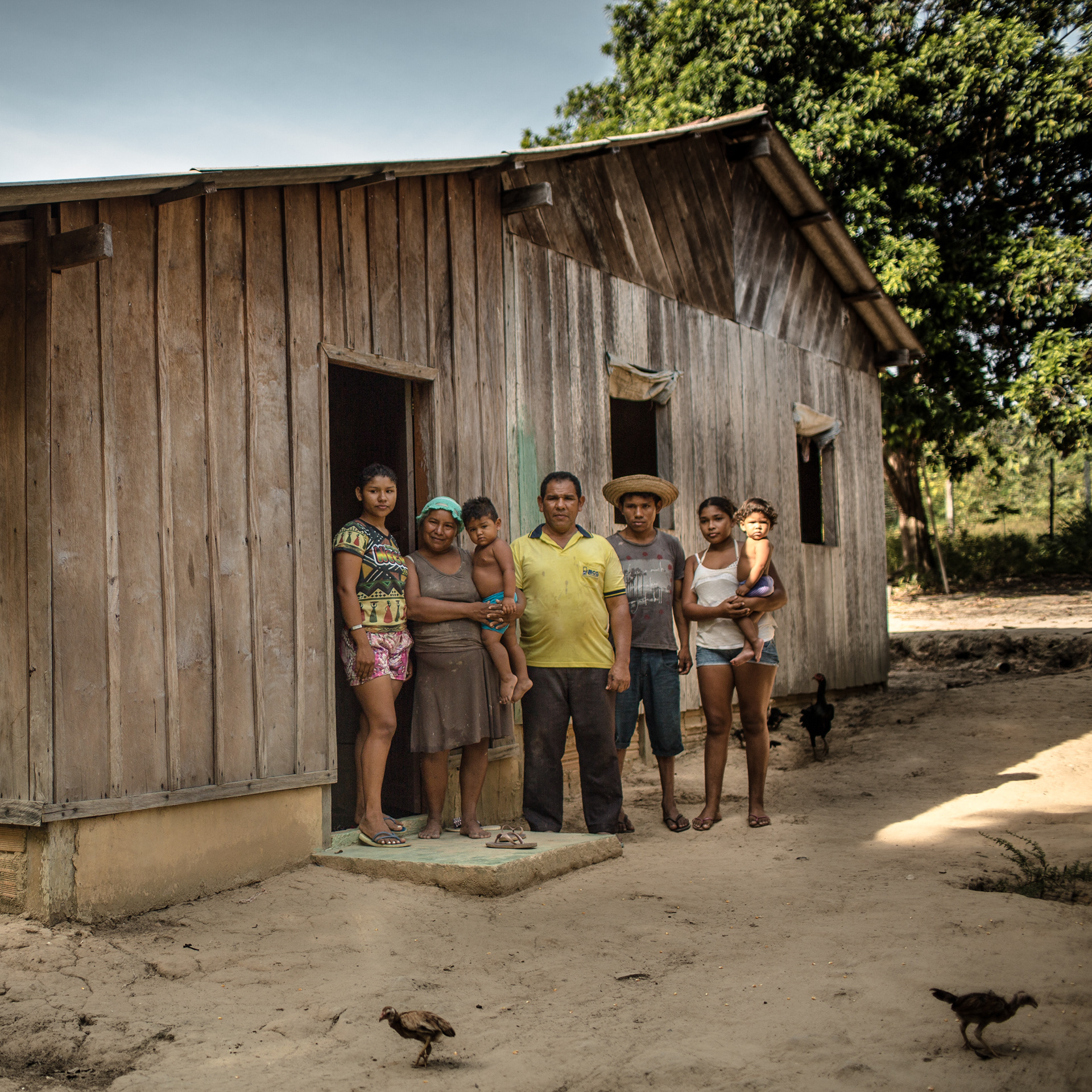
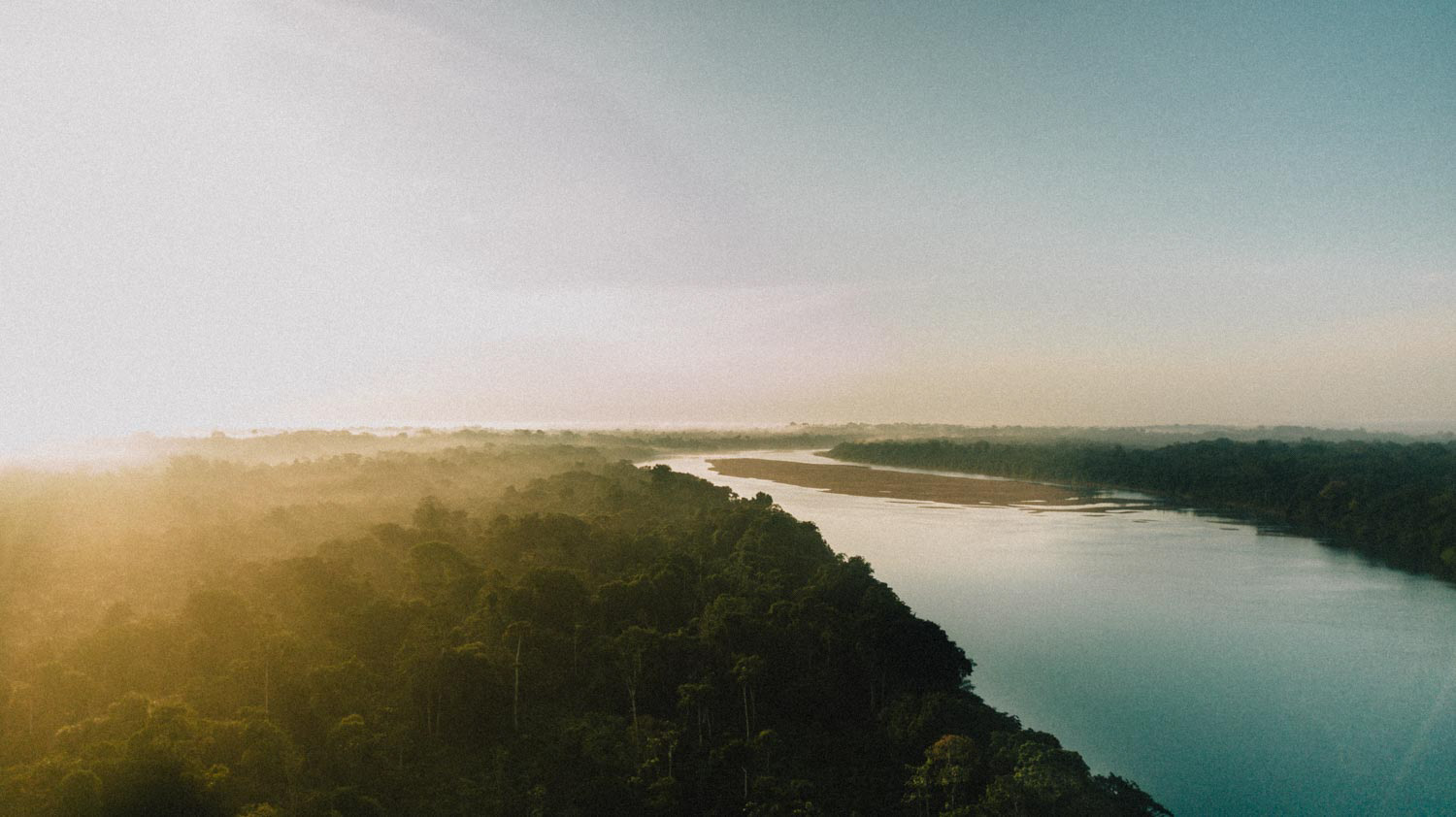
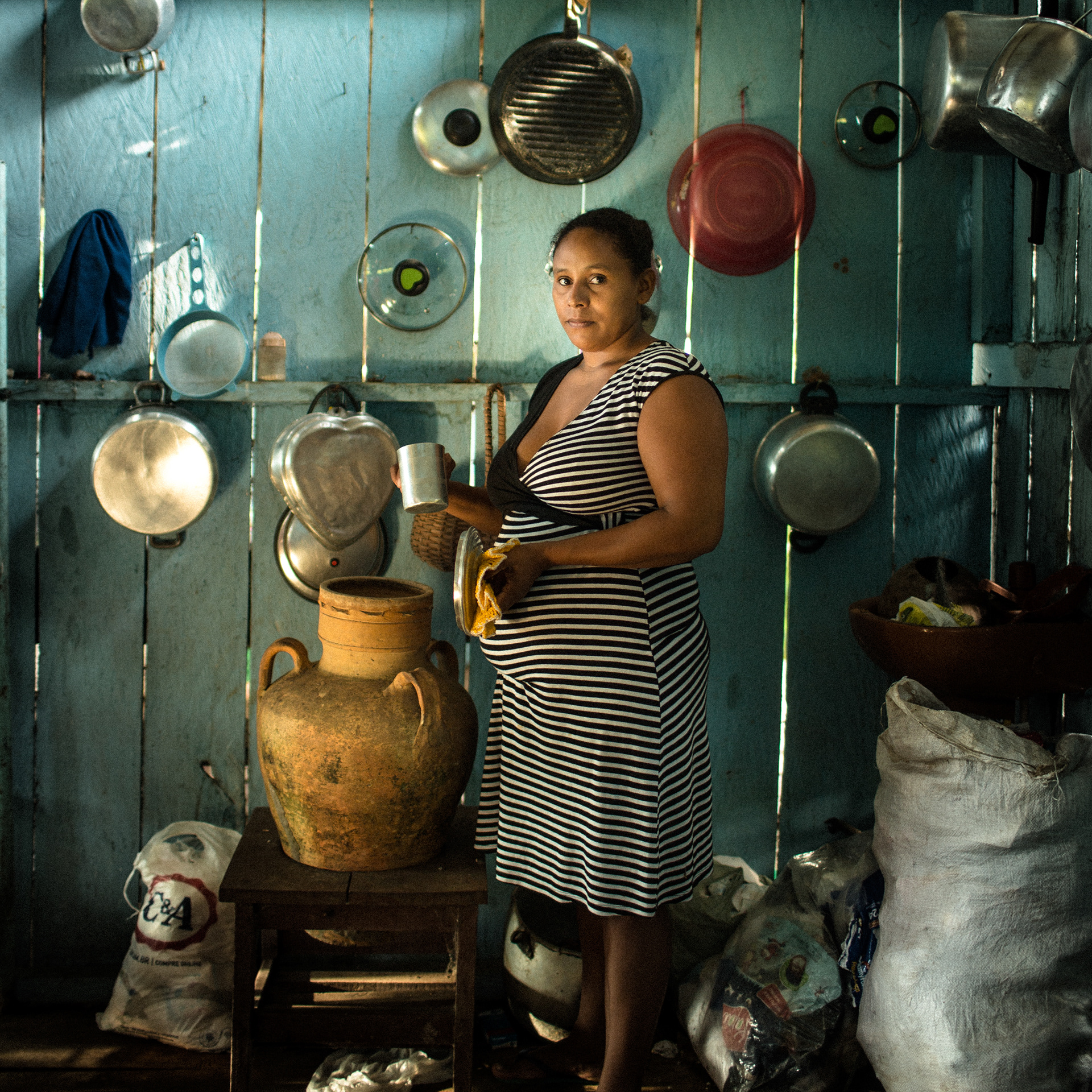
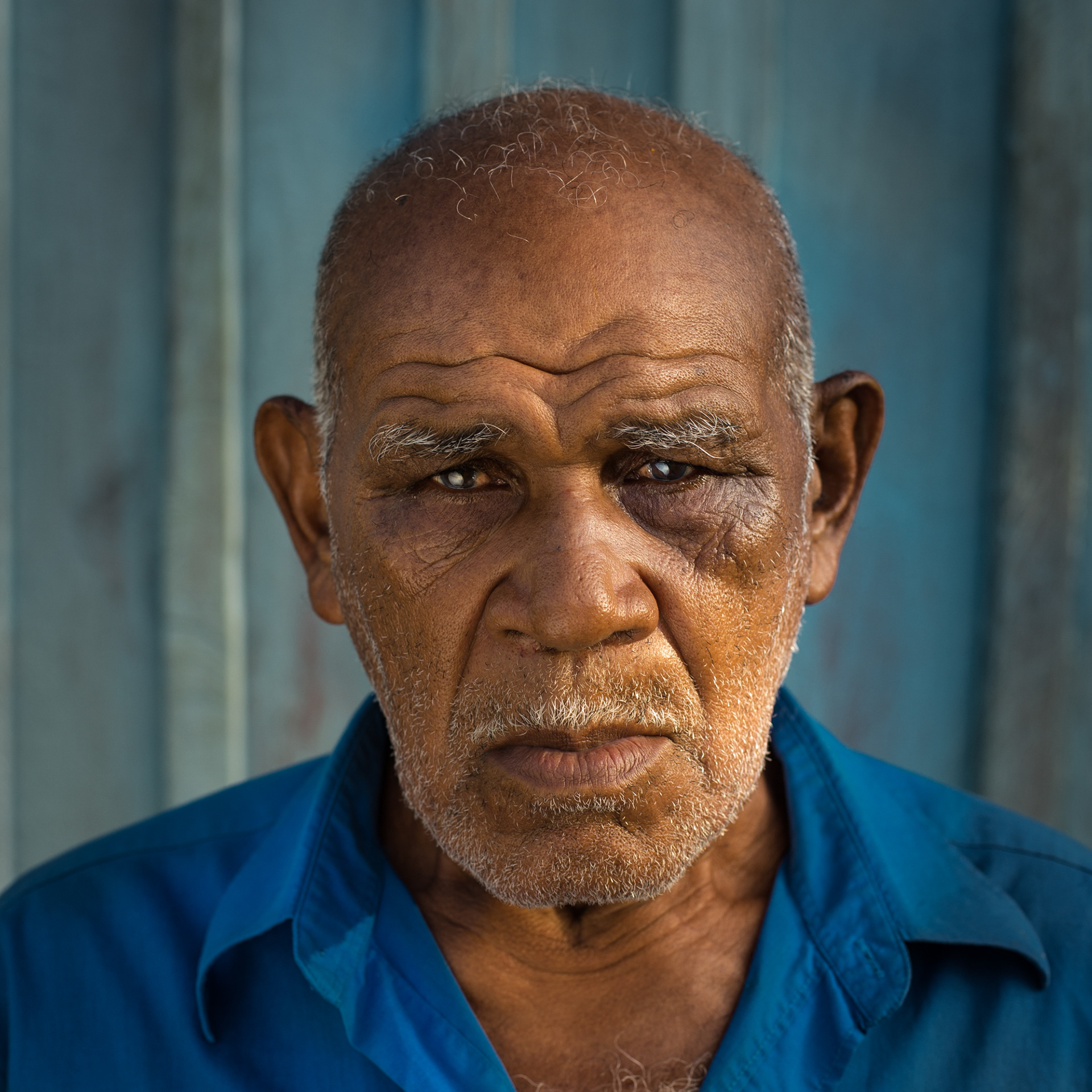

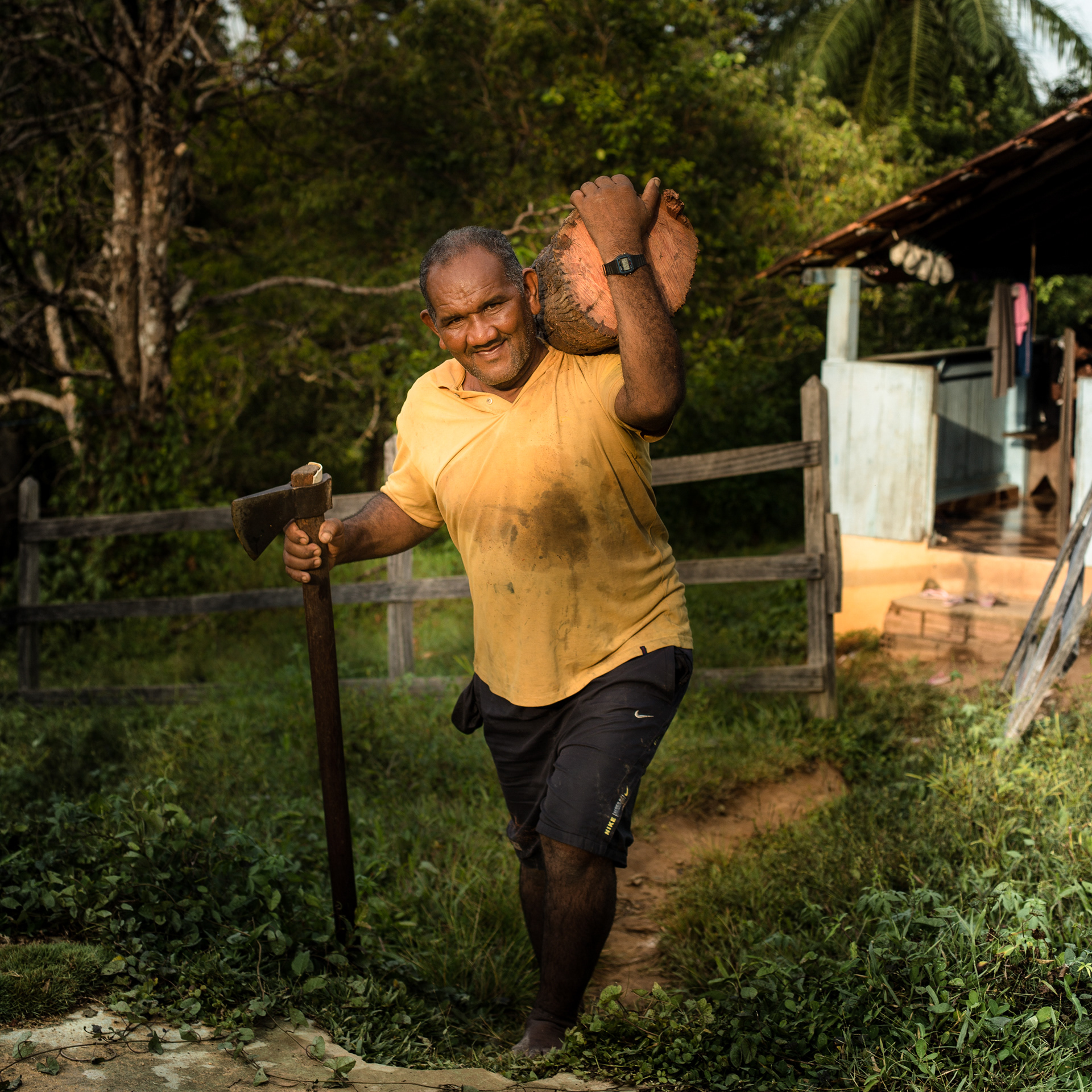

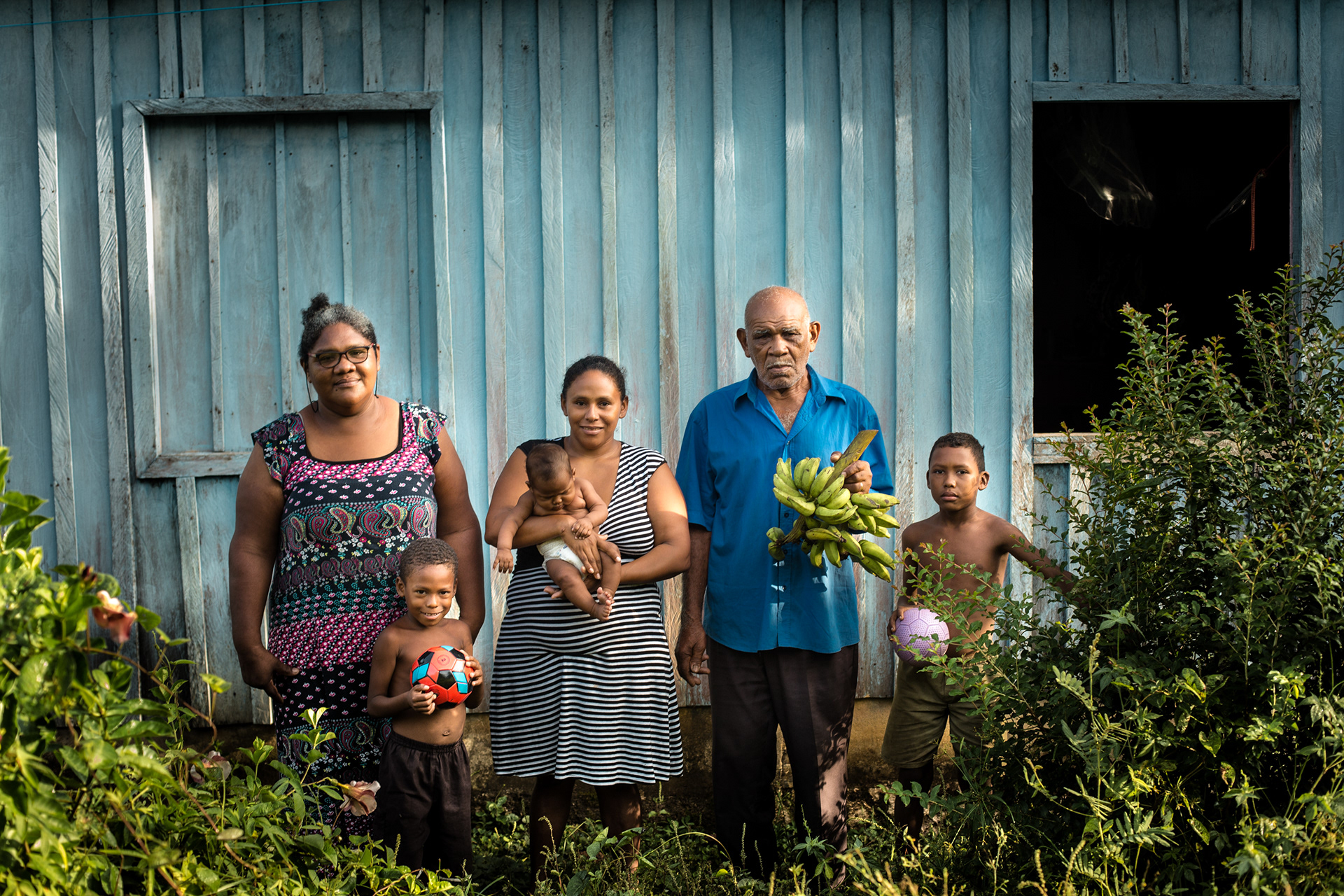
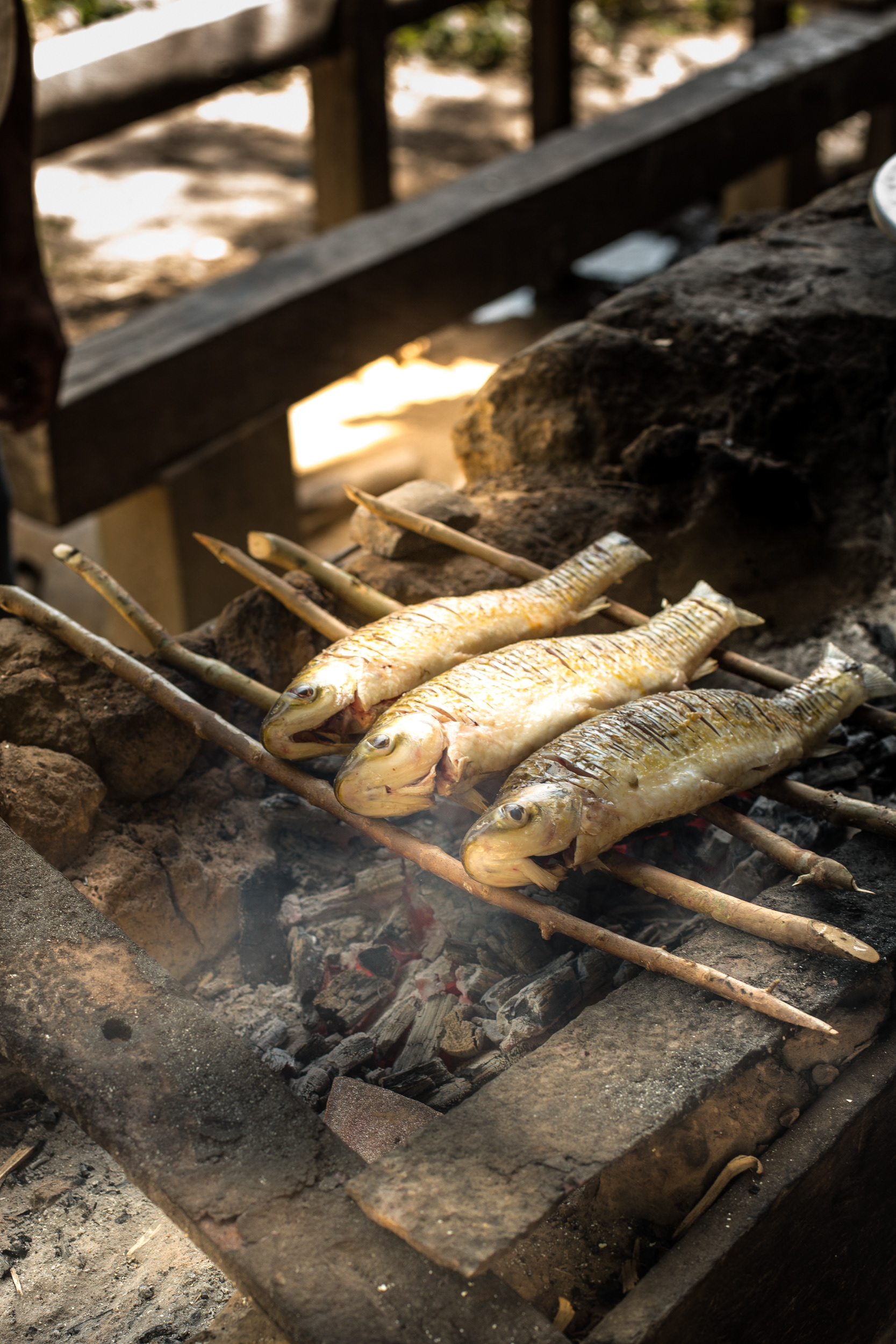
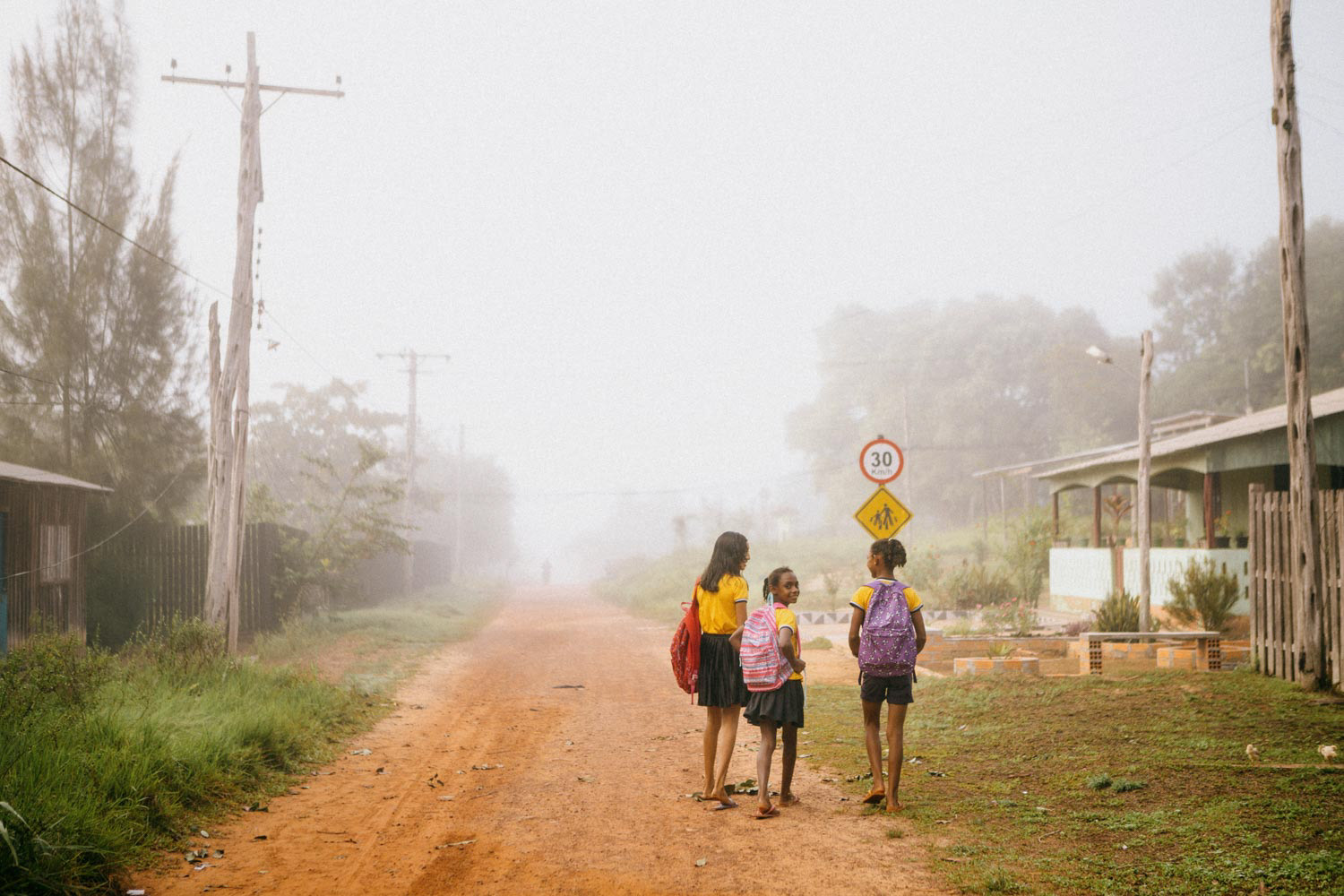
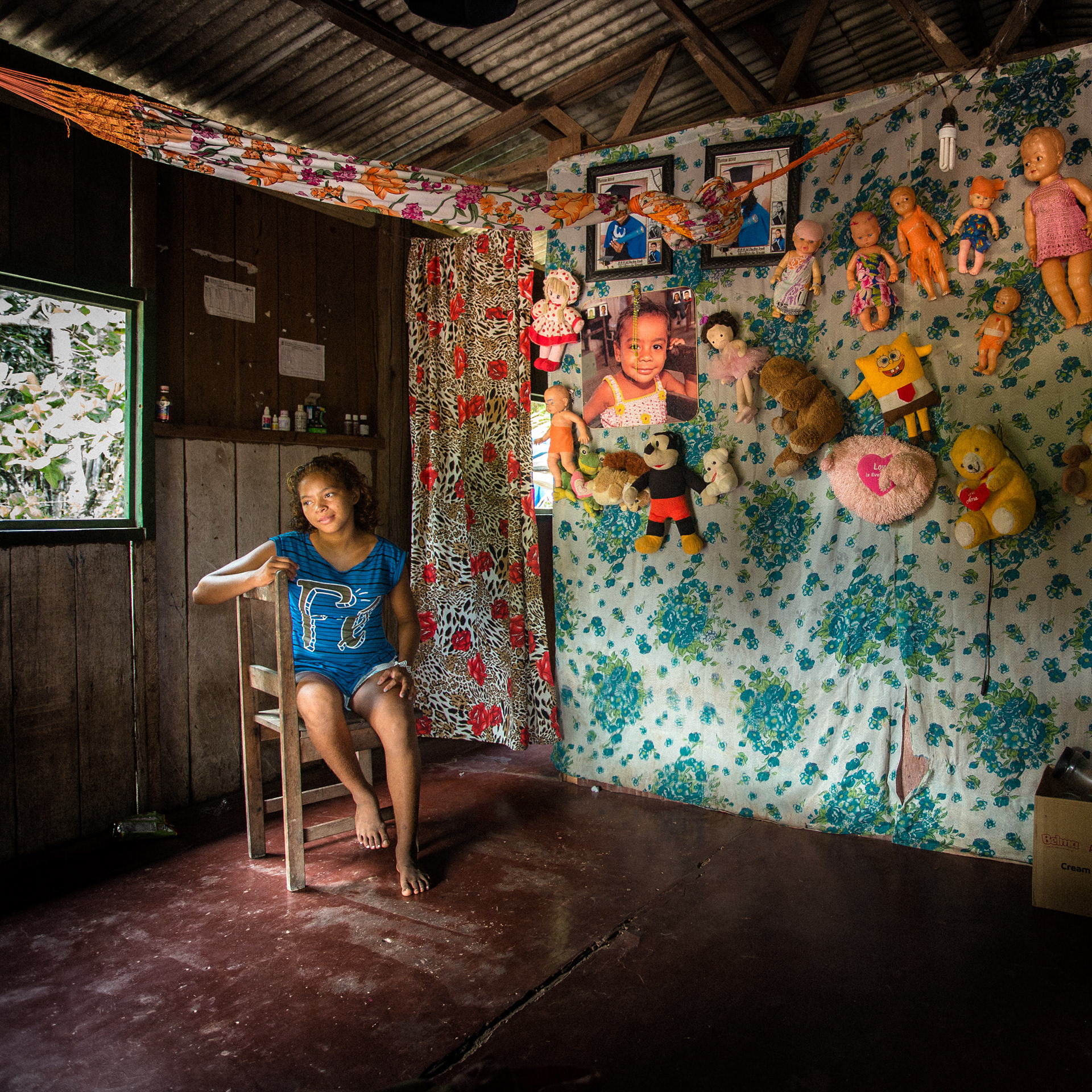
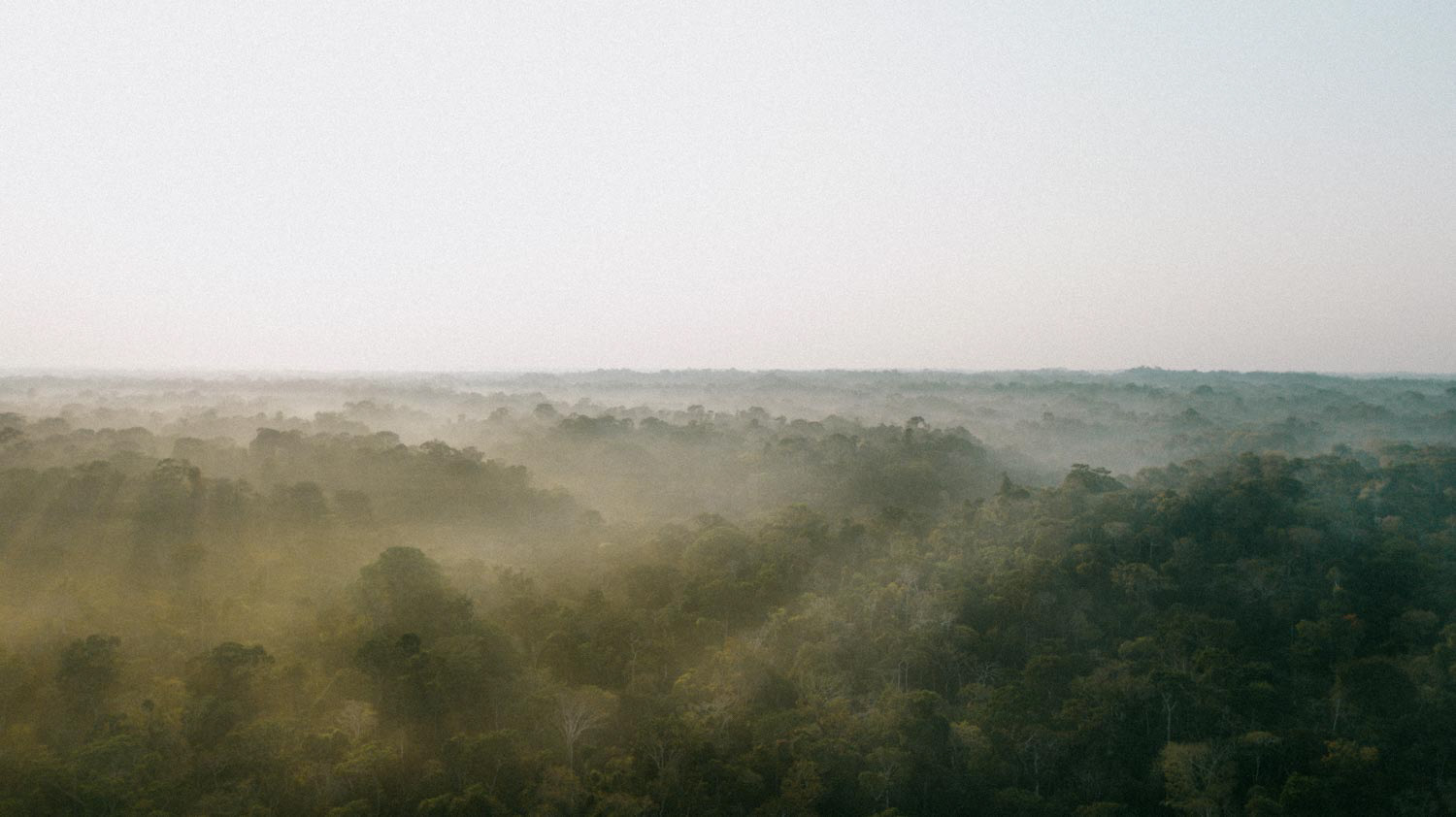
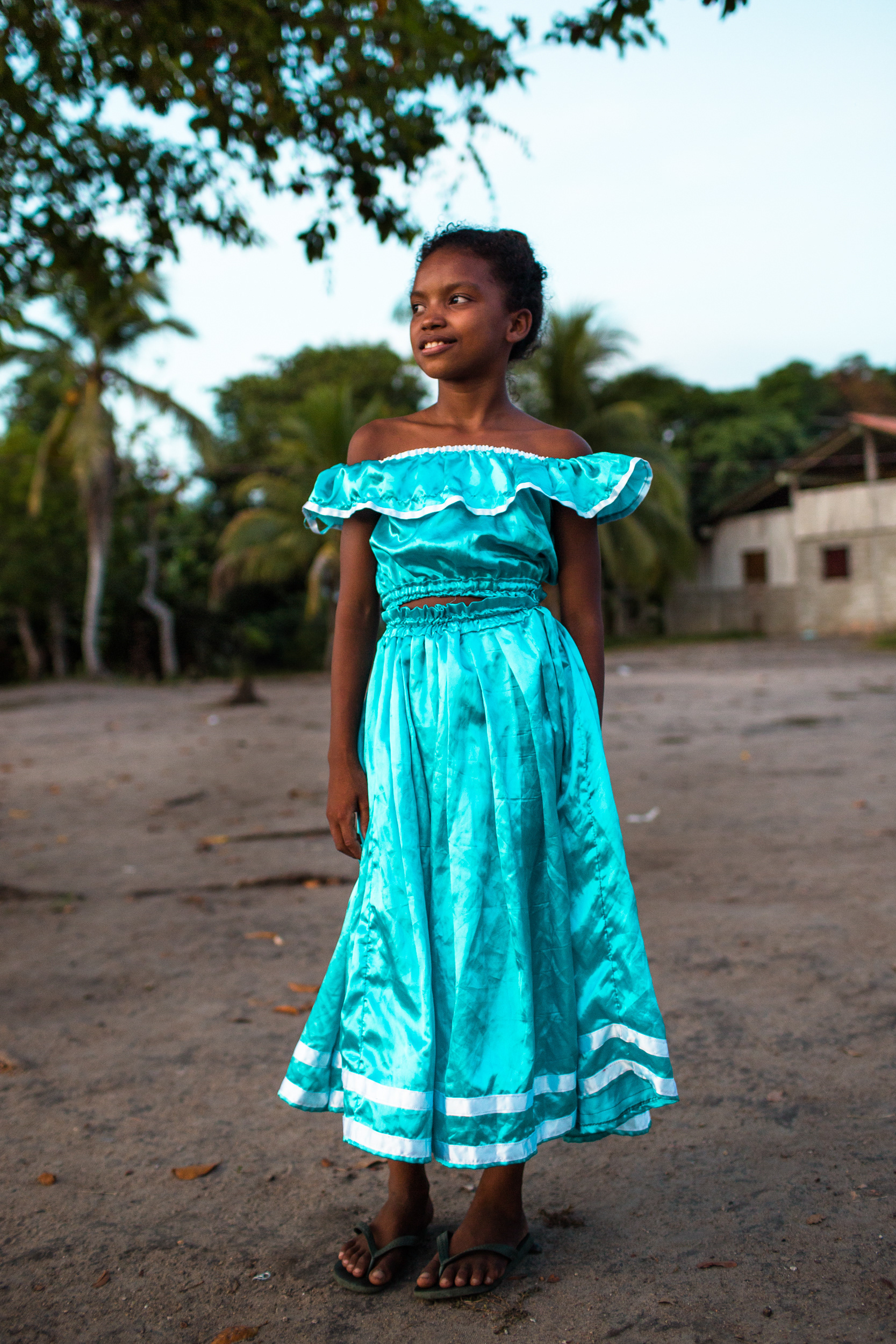
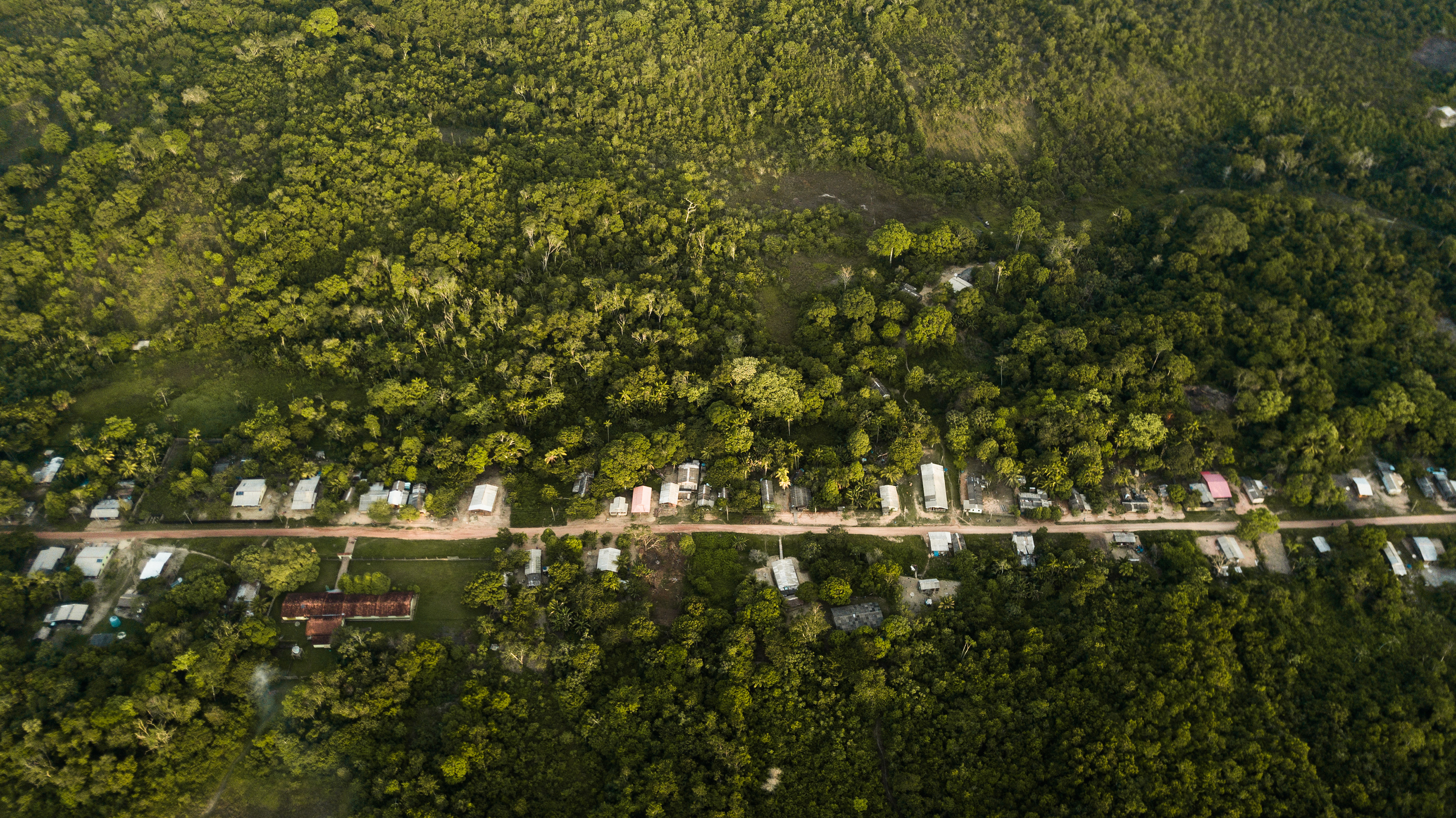
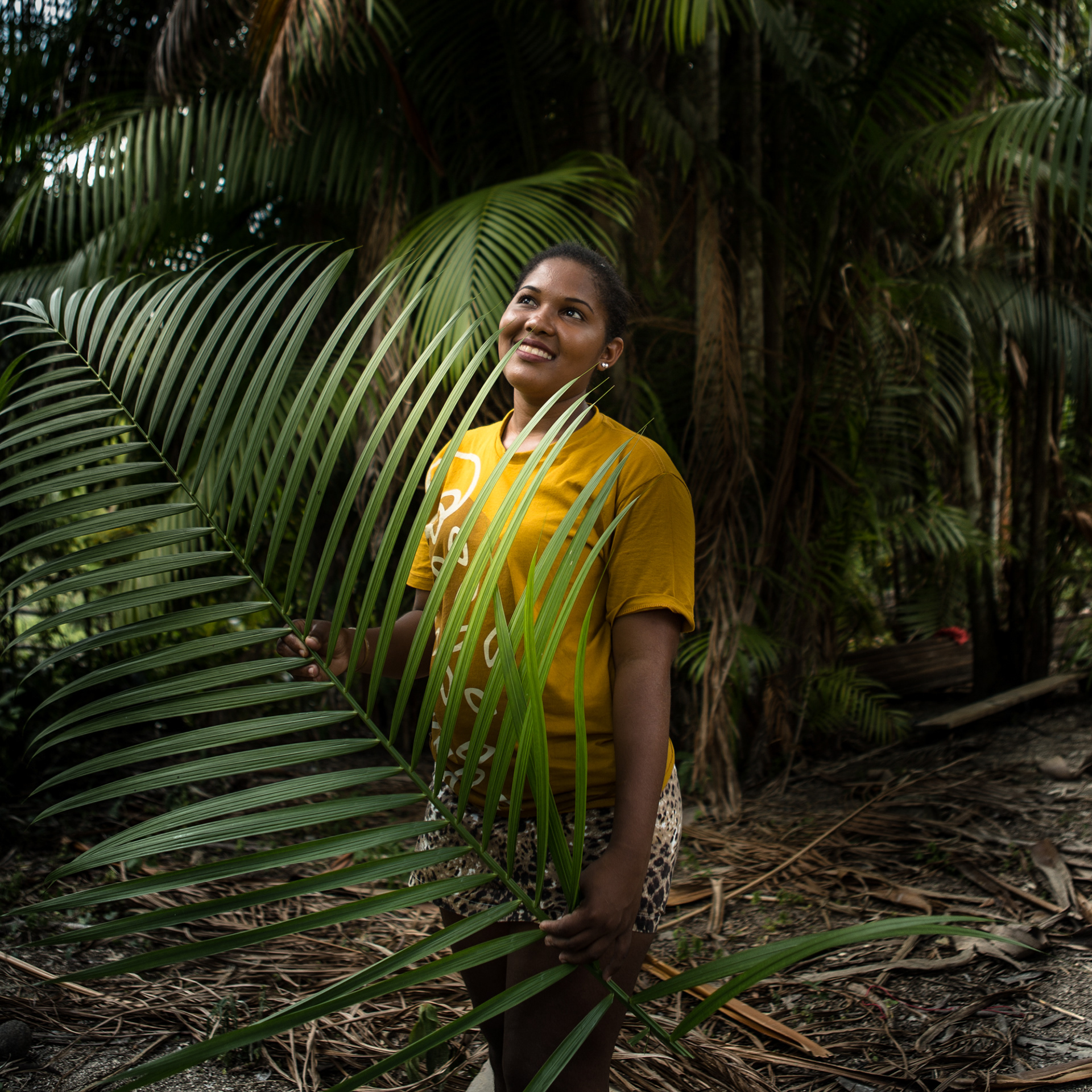
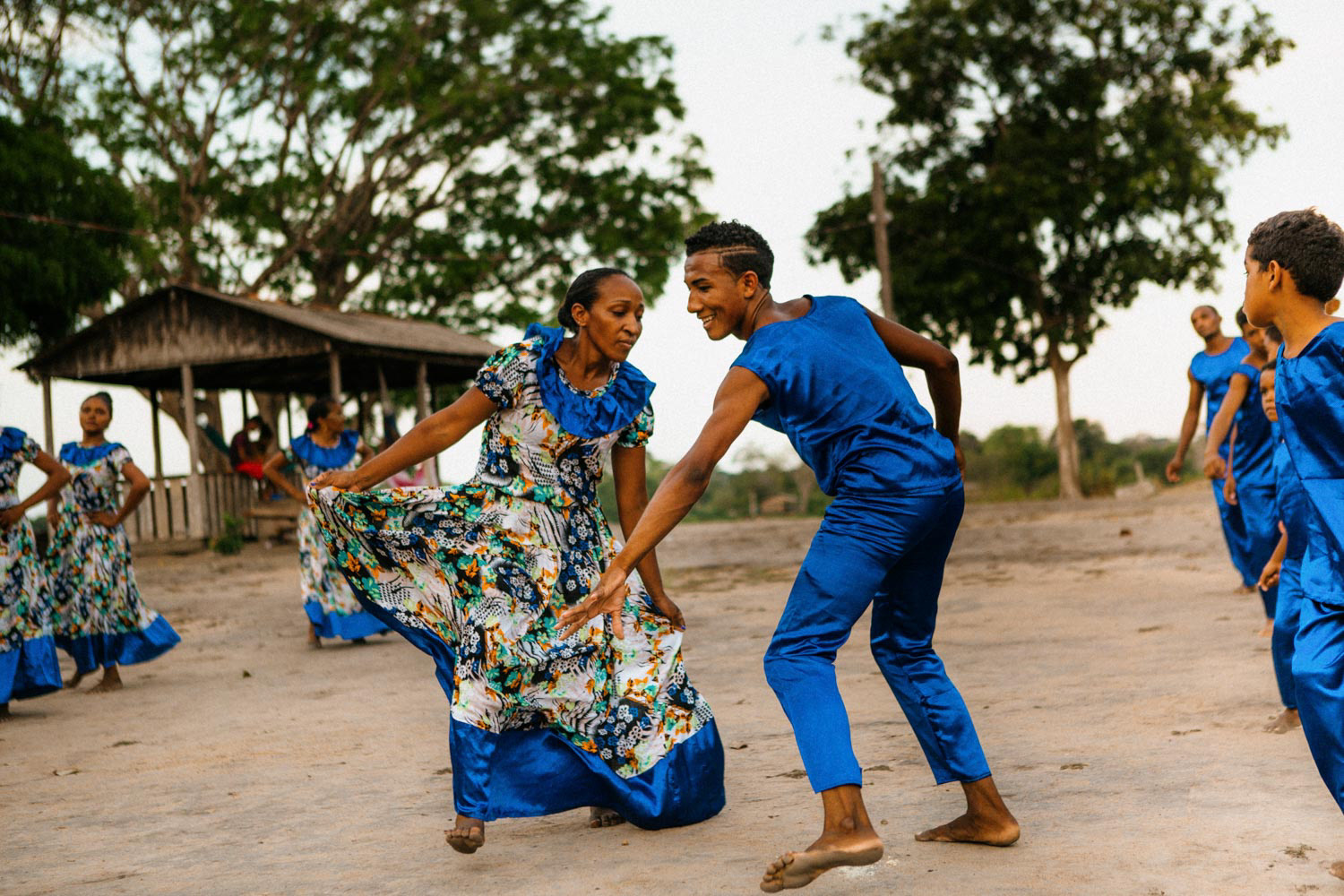
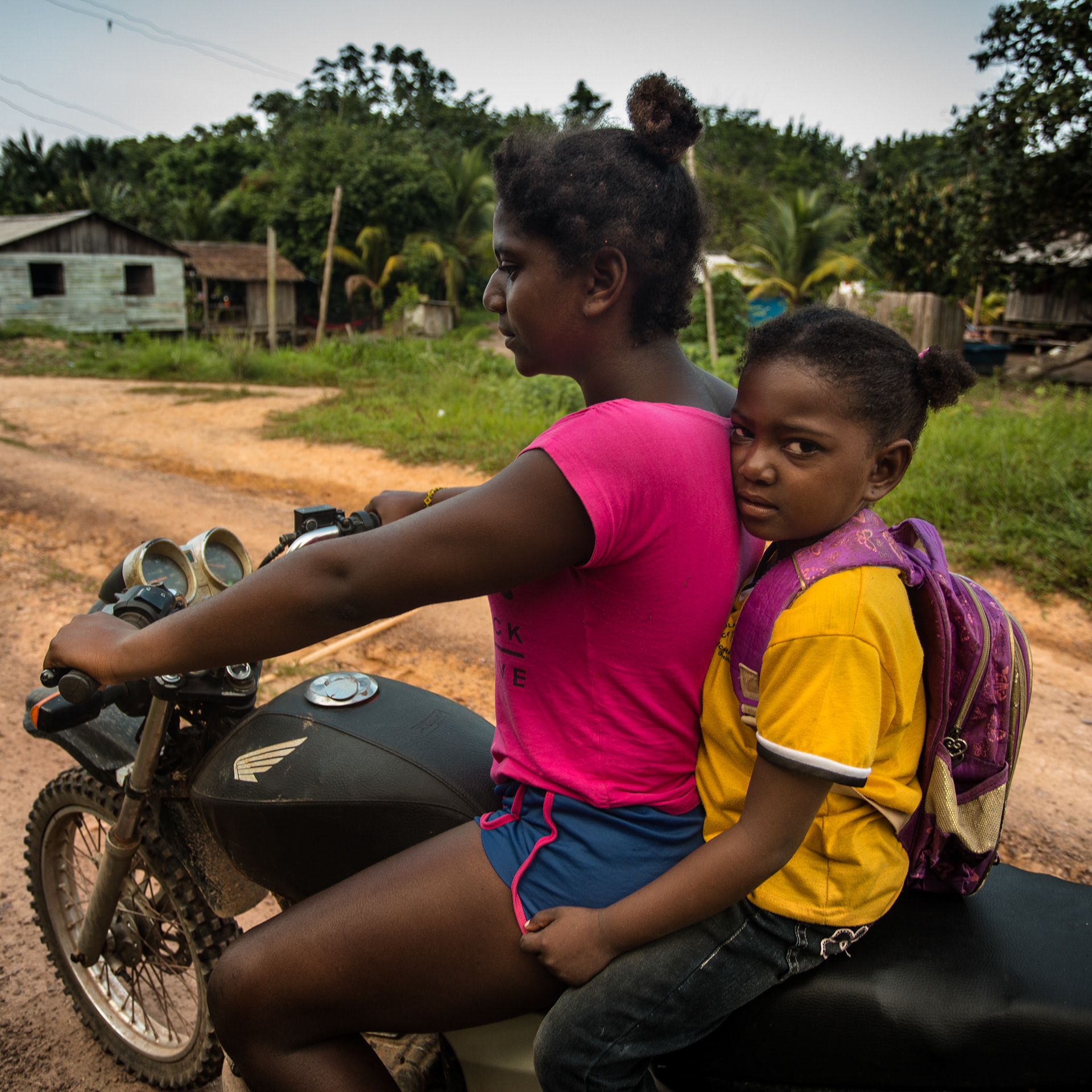
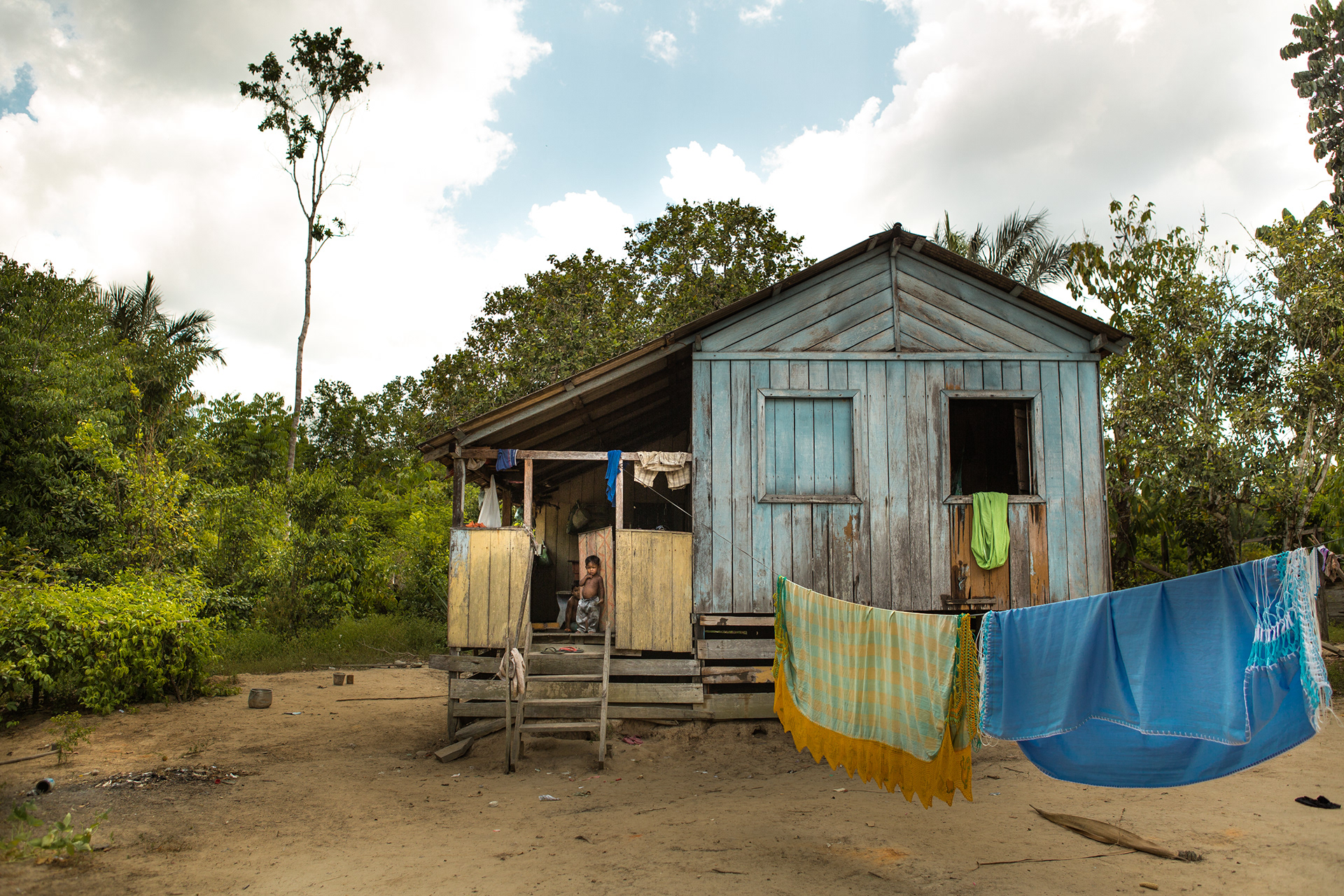

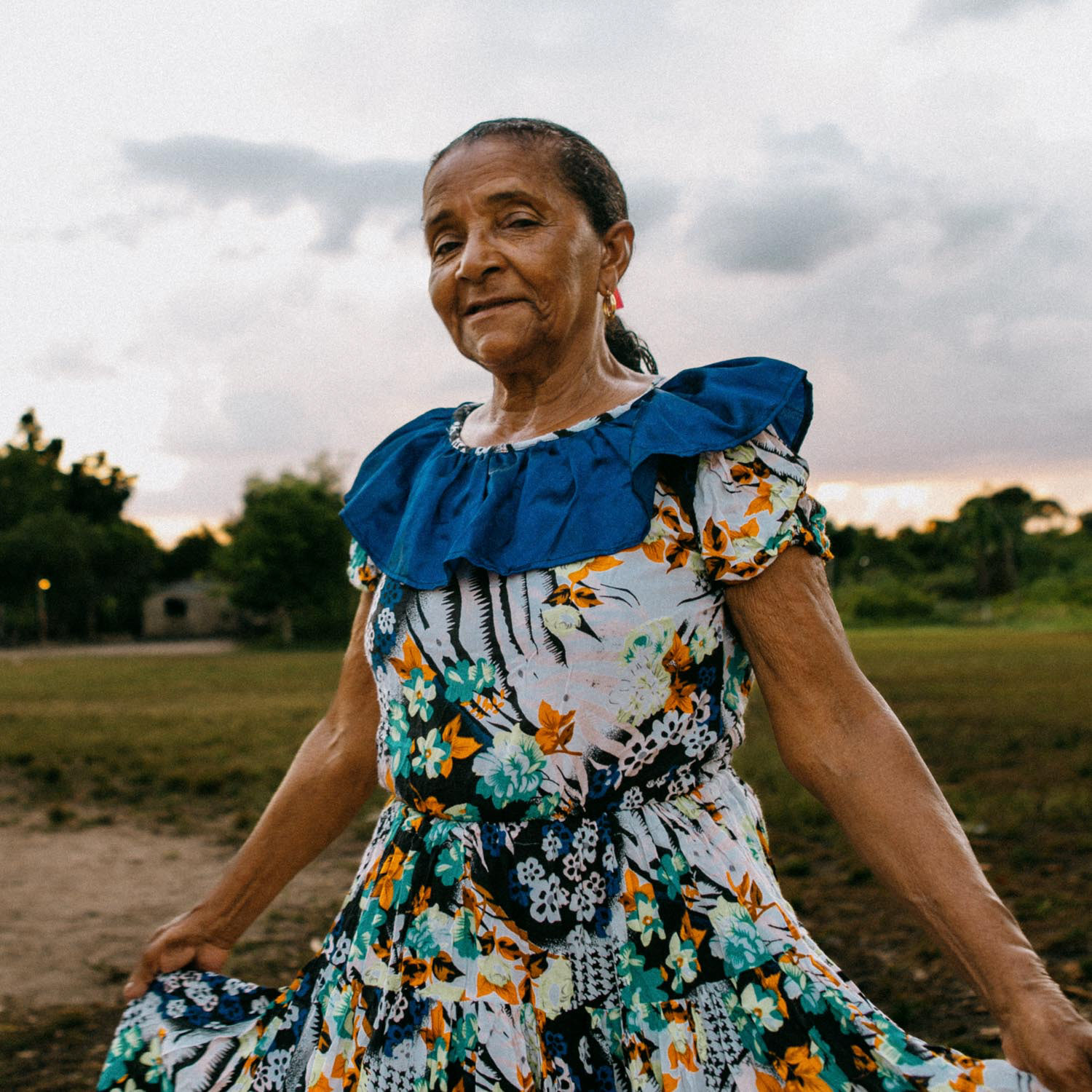
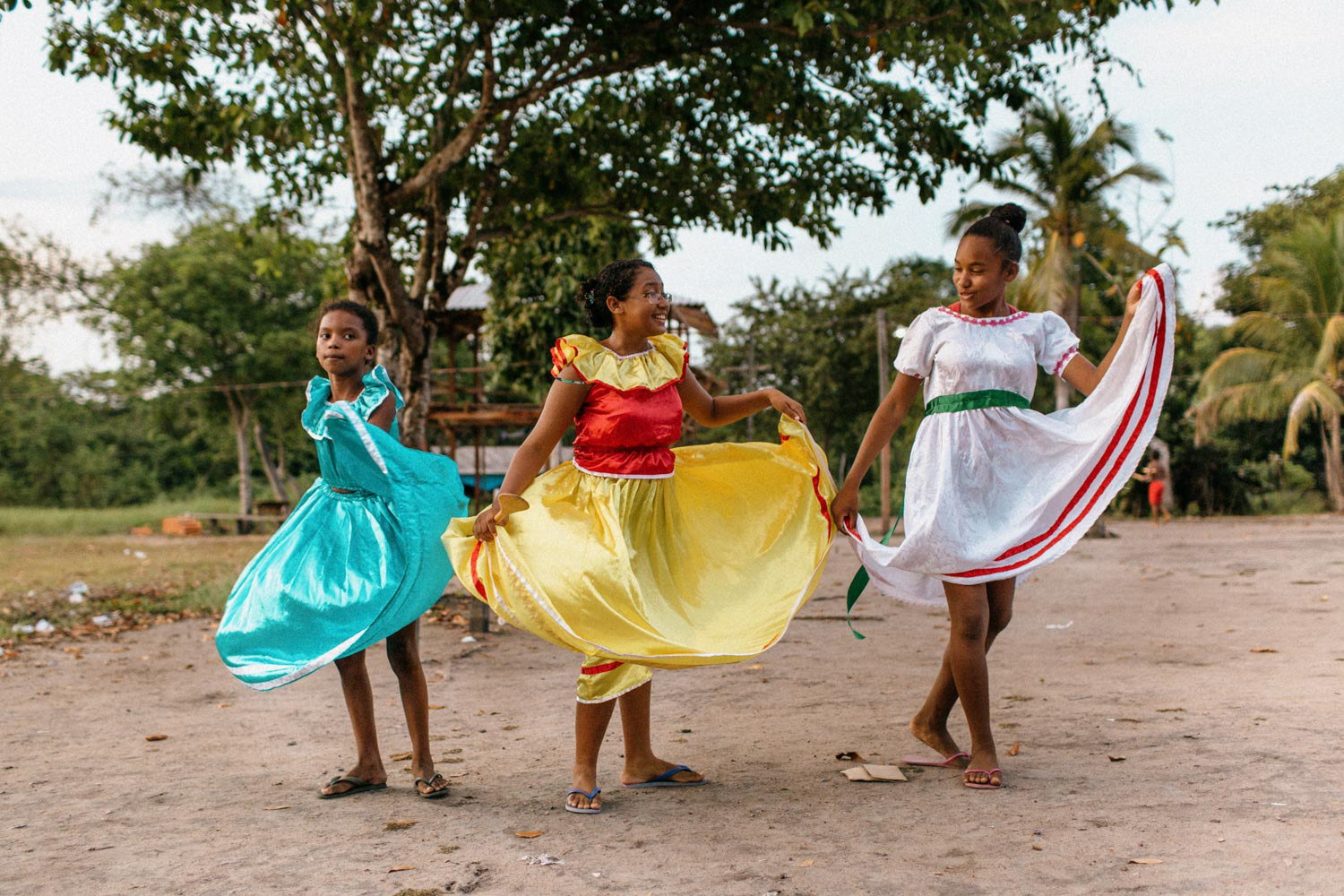

Quilombos são comunidades são formadas, na maior parte das vezes, por descendentes de africanos que foram escravizados, e vivem em terras doadas, compradas ou ocupadas há bastante tempo. A palavra quilombo tem origem bantu e na cultura africana significa lugar cercado e fortificado. Talvez por isso os primeiros quilombos brasileiros nasceram em lugares afastados e de difícil acesso. A população quilombola existe até hoje: são cerca de 3.212 comunidades reconhecidas no Brasil, número que ainda pode passar de 5 mil.
Tudo começou a partir da segunda metade do século 18, quando muitos negros africanos foram levados para as fazendas de gado e cacau de Óbidos e Santarém, no Pará, estado ao norte do Brasil, e de lá fugiram em busca de liberdade. Os que tiveram sucesso na fuga subiram o rio Trombetas, afluente do Amazonas, para se esconder. Homens e mulheres carregavam marcas à ferro quente na pele, como gado e venciam mata, pedra e água, atravessavam cachoeira nadando, atravessavam com crianças nas costas.
Acima das cachoeiras, protegidos pelas barreiras naturais da selva e das quedas d’água do rio Trombetas, os negros compartilharam o rio e a floresta com os povos indígenas que lá já estavam. Naquela região presença humana é antiga, habitada por indígenas Tunayana, Tiriyó, Txik’yana, Katxuyana e Kah’yana. Lá os negros fundaram os primeiros quilombos, como o quilombo Maravilha, maior e mais famoso da região.
Os quilombolas conhecem plantas medicinais, técnicas produtivas de agricultura familiar, têm uma rica culinária, cultura e religiosidade, além de constituírem um registro vivo da história dos povos negros do Brasil. Grande parte dos africanos levados para aquela região tem origem bantu, vindos principalmente da Angola e da atual República Democrática do Congo.
Texto: Giovana Consentini para www.uniamazonia.co
EN
Quilombos communities are formed mostly by descendants of enslaved Africans, and live on land donated, bought or occupied for quite some time. The word "quilombo" has Bantu origin and in African culture means fenced and fortified place. Perhaps that is why the first Brazilian quilombos were born in remote and difficult places. The quilombola population exists until today: they are about 3,212 recognized communities in Brazil, number that can still pass of 5 thousand.
It all started in the second half of the 18th century, when many black Africans were taken to the cattle and cocoa farms of Óbidos and Santarém, in Pará, a state in the north of Brazil, and fled in search of freedom. Those who succeeded in escaping climbed the river Trombetas, a tributary of the Amazon, to hide. Men and women carried brands of hot iron on their skin, like cattle and they beat wood, stone and water, crossed waterfalls swimming, crossed with children on their backs.
Above the waterfalls, protected by the natural barriers of the jungle and the waterfalls of the Trombetas River, africans shared the river and the forest with the indigenous peoples who were already there. In that region human presence is ancient, inhabited by Tunayana, Tiriyó, Txik'yana, Katxuyana and Kah'yana natives. There they founded the first quilombos, like the "quilombo Maravilha"(Wonderful), bigger and more famous of the region.
The quilombolas know medicinal plants, productive techniques of family agriculture, have a rich cuisine, culture and religiosity, besides being a living record of the history of the black peoples of Brazil. Most of the Africans taken to that region are of Bantu origin, mainly from Angola and the present Democratic Republic of Congo.
Text by Giovana Consentini for www.uniamazonia.co